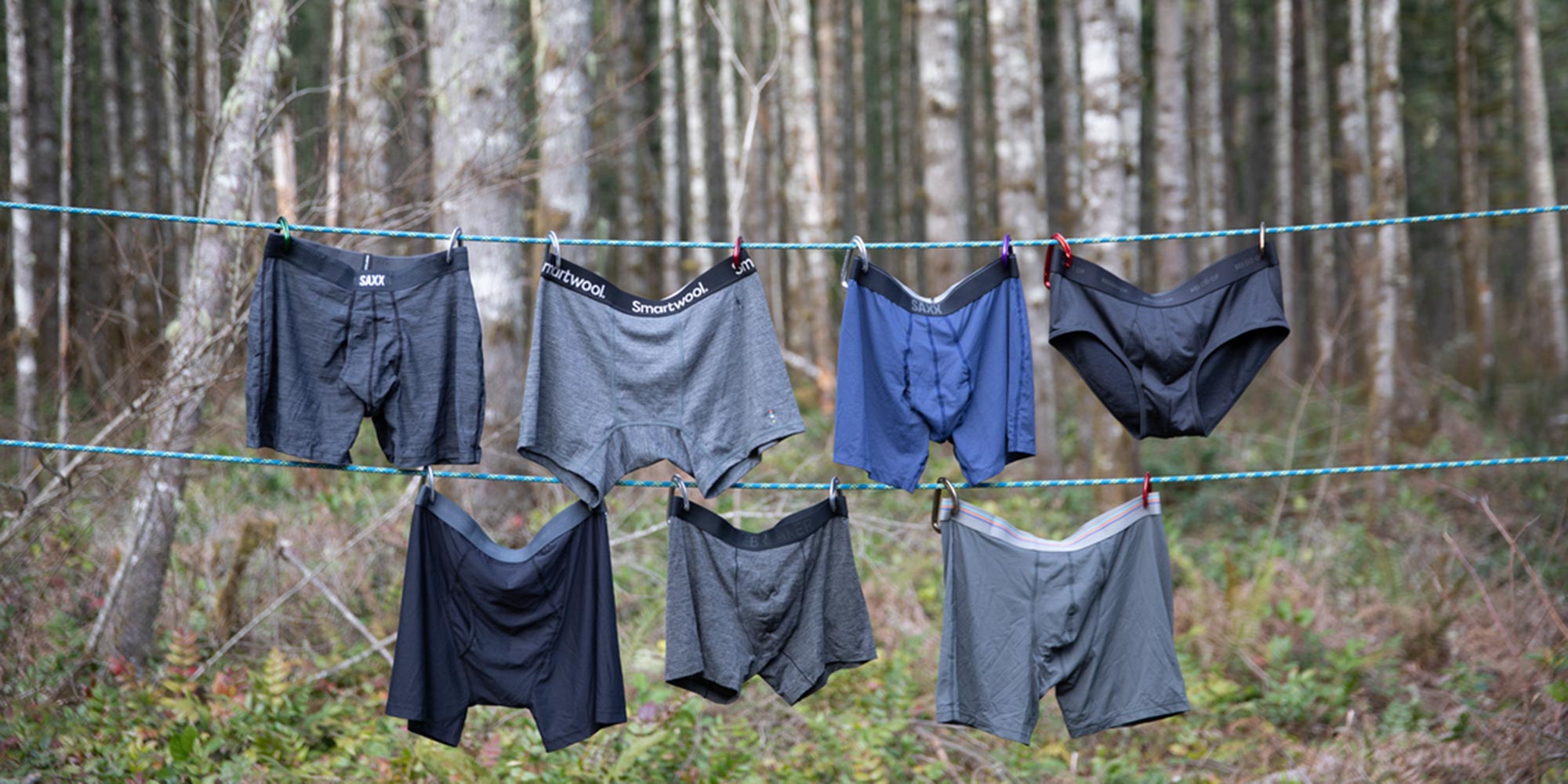No one told me about the importance of good underwear before my first backpacking trip exploring Collegiate Peaks in the Rocky Mountains. Instead, I found out (the unfortunate way) that packing only cotton undies on an 8-mile hike in a Colorado summer wasn’t ideal. Arriving at camp equaled a lasting sweat that kept me squirming well past dinner.
Since that cotton underwear fiasco, I began paying better attention to the materials—and styles—of the underwear I brought outdoors. Undies that dry quickly are a must on overnight rafting trips so you don’t sit in a damp bathing suit all day. Moisture-wicking underwear is essential on backcountry ski tours because cold temps plus sweat can equal hypothermia. For longer hikes, embracing the granny panty, or fuller-coverage boxers and briefs, means better airflow and a chafe-free time. And no underwear under leggings, at least for me, is a one-way ticket to an angry bum.
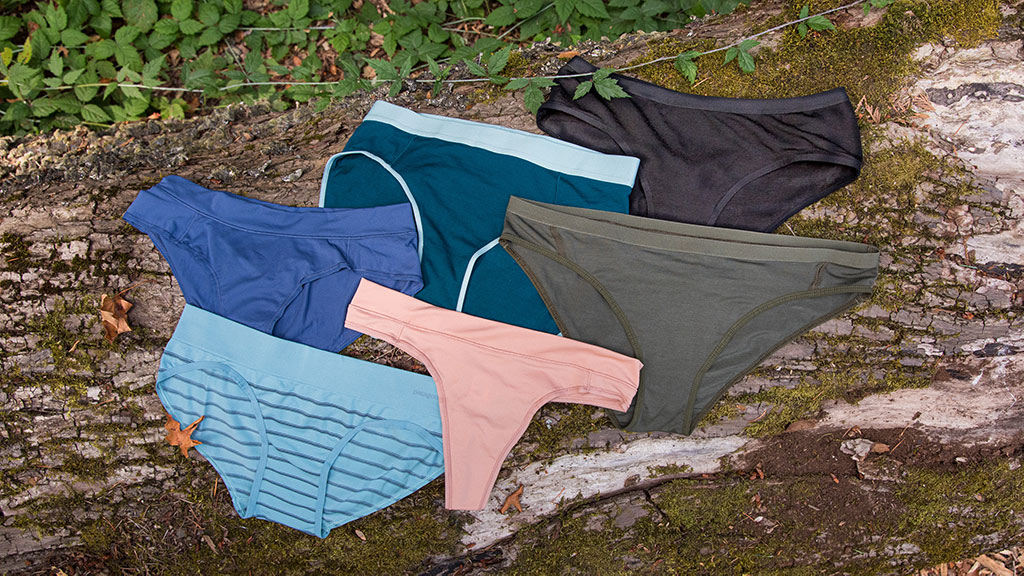
For years, I never heard anyone speak about how crucial dry, breathable and comfortable underwear is in the outdoors. When I learned better, I couldn’t stop thinking, why don’t we talk about arguably the most important layer? While personal preference plays a part, the right material and cut can keep you happy on the trail for longer. So, we’ve gathered some favorite pairs, spoken to adventurers about their preferred skivvies and laid bare the best materials for underneath.
Why does underwear matter?
It’s true that some trekkers opt for the built-in underwear of running shorts or going plain ol’ commando, but underwear can truly make the difference in your outdoor endeavors for two big reasons: comfort and health. The right pair helps eliminate chafing (which can happen frequently when you go bare), wicks moisture and helps eliminate odors. Introducing bacteria, whether from sweat or a not-so-sterile outdoor environment, creates the perfect storm for discomfort, chafing rashes or even infections.
The first step is to find fabrics that are breathable and wick away moisture. We’ll cover those choices in detail below. Other considerations are more personal, like style and comfort.
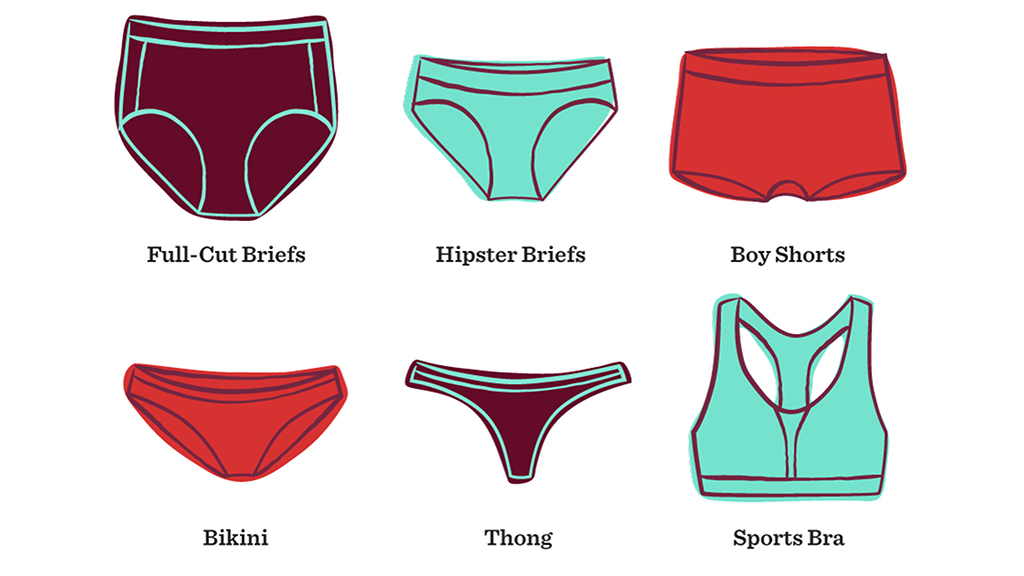
No matter your choice, take our next advice on fit: Find the middle ground between loose and tight. Formfitting underwear helps prevent chafing—irritation to the skin caused by friction—because it decreases the chances that extra material creases and slides down while you hike. However, compression materials, while helpful for activities like running, can feel constrictive and uncomfortable after a few hours, and won’t allow for much airflow.
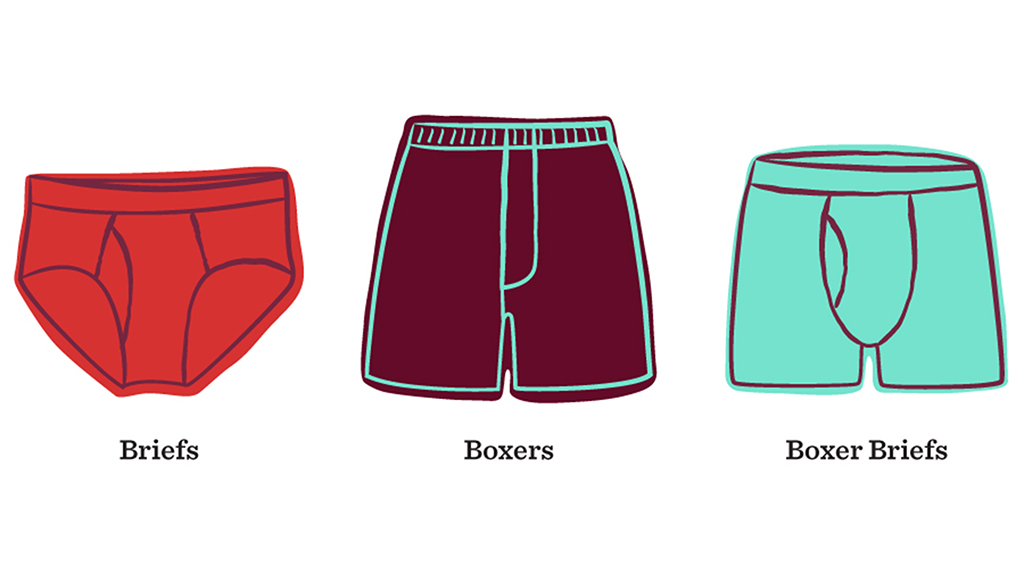
Whichever pair you choose, changing your underwear at camp or back at the trailhead will help keep you more comfortable and keep your nether regions bacteria-free. (Airing out your hiking undies overnight helps, too.)
Materials you want (and ones you don’t)
Merino Wool
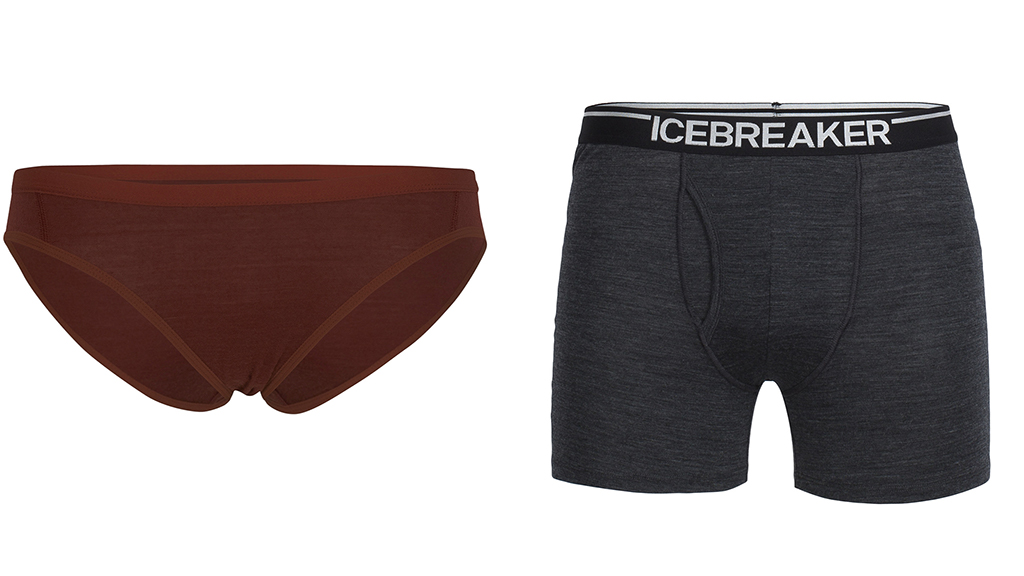
Forget the traditional itch of wool. Ultrafine merino wool fibers are soft, thermoregulating (which means they help keep you both cool and warm for the ideal body temp). Their natural wicking properties help pull moisture off your body like a champ. Because wool fibers hold on to moisture, you might not feel as dry as you would in synthetic undies, but the temperature-controlling fibers won’t make you feel cold. The best part? Merino wool is naturally anti-stink, keeping odor-causing bacteria at bay even after days on the trail. The Icebreaker Siren Bikini Underwear is our favorite pair of women’s merino wool underwear: The wool is spun with spandex and nylon for a comfy, stretchy fit without impacting the wool’s incredible features. Our men’s pick is the Icebreaker Anatomica Boxer Brief, with a contoured pouch and flat seams to significantly cut down on chafing without compromising support.
Synthetics

Synthetics are by far the biggest and most popular category when it comes to outdoor underwear. Synthetic materials are known for their durability, wicking capabilities and evaporating moisture so they keep you from feeling moist and help regulate your temperature. Be warned, however, that synthetics are prone to holding on to odors, so be prepared to wash on the trail or go nose blind.
Your synthetic choices include materials like:
- Rayon (which can be made from natural materials wood pulp)
- Nylon (lightweight and silklike, this is a very smooth and comfortable fabric)
- Polyester (one of the world’s most popular textiles, it’s highly breathable and wicking)
- Polypropylene (which is used mostly for water activity apparel, like wetsuits)
- Lycra spandex (which provides a lot of elasticity, usually bonded with another fiber)
Cotton
There are only two scenarios where we would recommend cotton: hanging around camp or before you drive home from the trail. Cotton is extremely absorbent, which is great in some instances, but hiking in cotton undies isn’t one of them. Avoid cotton unless your activity levels will be low (rest day around camp, sleeping or changing at the end of a hike) to avoid a lot of collected moisture, stinkiness and irritated skin.
A Few Favorites, in Brief
We asked professional outdoor guides and outdoor enthusiasts about their takes on underwear for outdoor pursuits. Here’s what they had to say:
Aaron Friedland, international climbing/mountaineering guide, REI Co-op Member since 2013
“I’m honestly not a name-brand underwear man and will wear just about any three-pack synthetic boxer brief that’s on sale. But I’ve learned from a few too many upset-stomach waddles to the latrine at 17,000 feet and extra days stuck in camp waiting on the storm to pass that you should always bring one more pair than you think you need.”
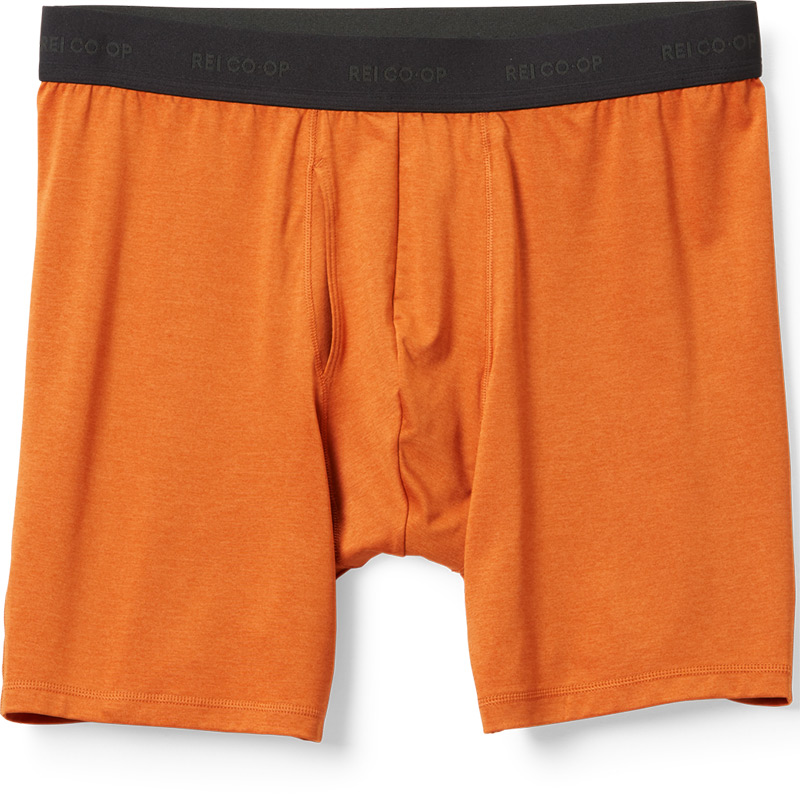
Austin Gibney, fly fishing/rafting guide, white water kayaker, REI Co-op Member since 2020
“Trust me: Avoid the ‘man-funk’ and invest in some breathable, odor-resistant briefs. It’ll save you much misery down south. I learned the hard way on a weeklong overnight raft trip that bringing nothing but the gimmicky boxers your mom puts in your Christmas stocking is a great way to stay swampy. Breathability is your best friend.”
Kate Butler, gear tester, ice climbing guide, Alaskan expedition operations manager, REI Co-op Member since 2012
“I learned the importance of packing multiple pairs of underpants before a NOLS expedition out of Talkeetna, Alaska. It rained every single day for 30 days in the backcountry. If I hadn’t had a pair of quick-dry undies drying out overnight while I slept in cotton panties, I may not have survived that month. But, thanks to that key advice, I came out happy, healthy and, best of all—dry.”
Undies by activity
Most of our advice in this article is based on trekking-based activities, but better underwear choices are out there, based on your preferred outdoor activity. We chose a few of the most popular to demonstrate the differences to look for in your skivvies.
Run
For our fleet-footed friends, fit and function are key. Fast-wicking and quick-drying materials are as important as the design of your underwear—this might be the moment for compression shorts or a longer-cut boxer brief. However, you might prefer more room for movement and choose a brief or bikini cut. Many pairs of running shorts come with built-in liners that serve as underwear. Some runners may still prefer to wear a separate pair for additional comfort and support. We’re all for fewer items to get lost in the laundry, as long as they’re comfortable, quick-dry and don’t contribute to chafing.
Running shorts like the Brooks Chaser 7” utilize recycled quick-dry material to keep you dry and comfy in a 2-in-1 short. However, one runner says she swears by her ExOfficio Modern Thong with a pair of running tights for maximum comfort and range of motion on her runs. As we said, personal preference will rule the day when it comes to running undies.
Cycle
Any cyclist knows that padded bike shorts with a good chamois (the padded crotch piece) is your best friend. But the question is, do you wear underwear below your padded chamois? For the overwhelming majority, the answer is no. Wearing undies beneath what are essentially compression boxers with seat padding can cause chafing whether you’re mountain biking or road cycling. Instead, treat your padded bike shorts like underwear and look for comfortable, supportive and quick-dry materials, like the REI Co-op Junction Bike Shorts (women’s & men’s). If you don’t like the way padded bike shorts look, consider bike liners shorts to wear beneath baggies or other bottoms.
Water
Many people already wear quick-drying underwear beneath their board shorts. Whether you’re rafting Class III rapids or paddling across the loon bedecked lake, you want underwear that will dry fast to keep you comfortable and won’t weigh you down in the water. While bathing suit bottoms can work well for women, they tend to be bulky and can lead to chafing underneath shorts after a long time. Longer water trips are certainly more comfortable in thinner underwear than in double-layer bathing suits, anyway.
Water Shorts can be a good middle ground. Materials like polypropylene and neoprene, popular in wetsuits, give you good rash coverage with fast-drying properties and insulation from cold water. However, if you’re going to use a rental wetsuit—or are borrowing water layers from a friend—we still advise you wear your undies underneath. Cleaning your polypro is just as important as cleaning your hiking undies since bacteria love to live in rivers and streams and ponds, oh my.
Snow
We can’t stress enough how great wool underwear feels whether you’re swishing down a snowy mountainside or breaking a sweat up a skin track. Merino wool underwear (REI Co-op Merino Boxers or the REI Co-op Merino Hipster Underwear) not only wicks moisture away from your nether regions but keeps you insulated, too. If merino wool isn’t your speed, look for wicking-centric pairs to keep cooling (read: hypothermia-inducing) sweat away from your core. Underwear is still a good idea under insulating base layers like leggings, long johns and snow pants; but again, avoid cotton at all costs, as it will stay moist and make you feel even colder.
